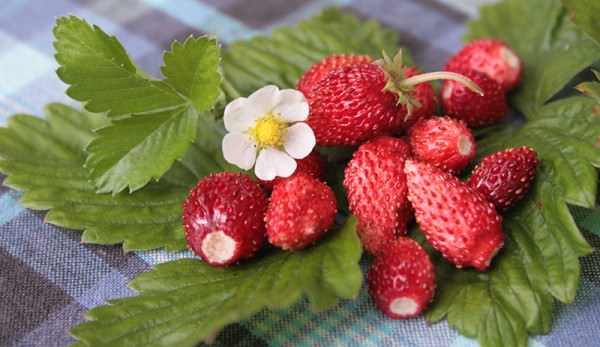
Alpine strawberries (Fragaria vesca) are a slice of heaven unlike anything else you can grow in your garden. These little berries are far sweeter and more fragrant and flavorful than their large-fruited, commercially grown cousins.
In France, alpine strawberries are called fraises des bois, and their harvest is met with great enjoyment. Although the fruits of these little delicacies are less than 1 inch long, their flavor is unsurpassed. Tasting like a combination of berries and pineapple with a floral twist, they’re surprisingly very easy to grow.
Alpine strawberries are perennial, woodland berries that have been bred and selected from wild strains over many generations. Hardy in USDA zones 5 to 9, with light winter mulching necessary only in the north, alpine strawberries grow in full sun to part shade. Well-drained sites are best, and prior to planting, add a hearty dose of compost or other organic matter to the soil.
Unlike cultivated strawberries, most alpine types do not send out runners. Instead, the size of the mother plants increases and you can divide the crowns in spring to get more plants. This means that alpine strawberries are extremely well-behaved and do quite well in containers and raised beds. Plants should be divided every three or four years. Plant them about 10 to 12 inches apart for the best performance.
Even when planted from seed, alpine strawberries quickly produce fruits, often the same season the seeds are sown. Their tiny, sweet fruits are produced continually all summer long, providing the grower with a handful of berries every day from just a dozen plants.
To grow alpine strawberries from seed, you can either start the seeds indoors, under grow lights in late winter or sow them outside in a protected area, such as a cold frame. Although seeds can take several weeks to germinate, once they do, growth occurs rapidly. Keep the seed-starting area moist until germination occurs, whether growing indoors or out. Don’t cover the seeds heavily after planting, as they need light to germinate; just a fine dusting of sand or compost to hold them in place is all that’s necessary. The optimum germination temperature is between 65 and 75 degrees F.
You can also purchase alpine strawberries as plants. Sold as bare-root or potted specimens, these mature plants will produce berries much faster, but they’re also more expensive than growing from seed.
Because alpine strawberries are such pretty little plants, they make a great ground cover and look beautiful edging a garden bed or trailing from window boxes or patio pots.
Like their cultivated cousins, alpine strawberries are prone to damage from slugs and snails. Harvest ripe fruits daily and avoid mulching with straw or shredded leaves where these pests are problematic.
In addition to popular, red-fruited alpine strawberry varieties, such as Alexandria and Mignonette, there are also several yellow-fruited types. Pineapple Crush is one popular yellow variety, and its flavor is touted to have a hint of pineapple flavor. Yellow Wonder is another excellent yellow-fruited type.
In addition to being delicious when eaten fresh, alpine strawberries make excellent jam and strawberry syrup.




